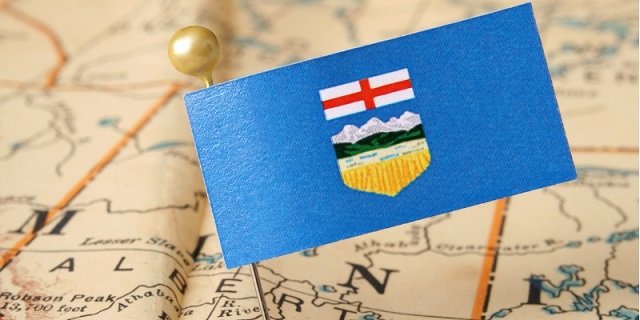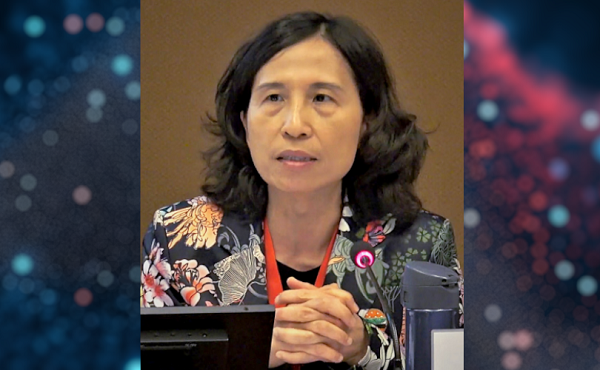Alberta
Leading proponent of Alberta Independence predicts provincial referendum in 2025

 Jeffrey Rath
Jeffrey Rath
Over one third of Albertans already support Independence from Ottawa
You know that Alberta is making progress towards an independence referendum in 2025 when both Alberta Premier Danielle Smith and Alberta Communist Leader Naheed Nenshi are discussing, considering, or teasing an Alberta Independence Referendum to be held in 2025.
This level of agreement between the two party leaders on the need for an independence referendum is demonstrative of the degree to which Alberta conversations on independence from Canada have taken hold around family dinner tables and in the pubs and community halls of the Commonwealth of Alberta.
Independent Journalist Rachel Parker has recently commissioned a poll that has support for Alberta Independence at 37%. It is noteworthy that there is presently 37% popular support for independence WITHOUT Albertans being educated on the benefits of Independence from Canada. Some of these benefits include:
- 60,000,000,000.00 (60 BILLION) dollars a year would remain in Alberta as opposed to being sent to Ottawa for “redistribution” to the mismanaged provinces of Canada.
- NO FEDERAL INCOME TAX
- NO CARBON TAX
- NO CAPITAL GAINS TAX
- NO GST
- NO EXCISE TAX
- NO MORE FEDERAL GUN GRABS
- NO MORE FEDERAL OVER REGULATION OF SPEECH, INTERNET COMMUNICATION, AGRICULTURE, TRAVEL, HEALTH, RESOURCE DEVELOPMENT, OR OTHER MATTERS OF CONCERN TO ALBERTANS.
- NO MORE MISGOVERNANCE BY FEDERAL POLITICIANS ELECTED BY MONTREAL AND TORONTO TO RULE ALBERTA.
The day Alberta declares independence Alberta’s GDP per capita would place Alberta as the the NUMBER ONE COUNTRY IN THE WORLD on the measure of GDP per capita. The end of all federal taxation and regulation will prompt an economic boom and overnight will increase the disposable income of every Albertan by at LEAST 35%.
This column is a call to action. Every Albertan fed up with having our rulers chosen by Toronto and Montreal need to forward this column to Danielle Smith and request that she pass the ALBERTA INDEPENDENCE REFERENDUM ACT.
THE ALBERTA INDEPENDENCE REFERENDUM ACT
Whereas successive Canadian Federal Governments have exceeded their constitutional jurisdiction through property seizures, excessive taxation and natural resource regulation aimed at the destruction of Alberta’s autonomy and sovereignty; and
Whereas the Government of Alberta has been mandated by referendum to bring an end to the payment of “equalization” dollars to provinces of Canada who continually mismanage their public finances;
The Alberta Legislature hereby enacts The Alberta Independence Referendum Act.
1. Within 6 months of every Canadian Federal Election the Government of Alberta shall call a provincial referendum on the Independence of Alberta from Canada.
2. The referendum question shall take the following form:
“Further to the over taxation and unconstitutional overreach of successive Governments of Canada aimed at harming the sovereign citizens of Alberta for the political benefit of successive governments of Canada, The Citizens of Alberta vote to remove Alberta from the Canadian Federation and form an Independent Commonwealth of Alberta.”
3. In furtherance of this legislation all Federal and Provincial taxes in Alberta shall be collected by the Government of Alberta.
4. Only such proportion of such taxes deemed by the government of Alberta to be for the common benefit of the Citizens of Alberta shall be remitted to the Government of Canada.
BY requiring a referendum following every Canadian Federal Election politicians pandering for votes from the idiots that think taxes can change the weather would have to consider the consequences of running on platforms that are based on the continued maldistribution of Alberta’s wealth.
Albertans need to understand that they would prosper by voting to confirm Alberta Independence from greedy politicians in Quebec and Ontario who claim to represent the failed colonial state of “Canada”.
An Alberta Dollar backed by the 3rd largest energy reserves in the world and the wealth of the Alberta Economy would be a stable currency with far greater value than the debt mired Canadian fiat currency.
Alberta Pensioners would see increased pension rates as Alberta could self fund Alberta Pensions out of the 60 BILLION no longer being siphoned out of Alberta by Quebec and Ontario until the 300 BILLION plus share of the Canada Pension plan was repatriated to Alberta.
Albertans need to write to Premier Smith and require her to pass the ALBERTA INDEPENDENCE REFERENDUM ACT prior to the expiry of the writ period for the next Federal Election. Regardless of whether a Conman Carney Liberal Government is elected or a Poilievre Conservative Government is elected, Federal Politicians need to be put on notice that they will continue to ignore or misgovern Alberta at their peril. By requiring an independence referendum following every Federal Election Alberta Voters will have the option of opting out of being governed by who ever Montreal and Toronto voters choose to misgovern Alberta against the will of the Citizens of Alberta.
There is no good reason or excuse for not creating a mechanism that will allow Albertans to put both the Government of Canada and the Government of Alberta on notice of their continued desire to remain in Canada following every Federal Election.
Legislation requiring a vote on independence following every federal election would give Danielle Smith and future leaders the leverage that they need to protect Alberta from globalists like Carney. Albertans should also beware that Pierre Poilievre has made it clear that a Conservative government will not stop Alberta wealth transfers to Quebec or stop ripping off Albertans for the benefit of the Laurentian Elite.
Remember, it’s all fun and games until someone loses a province.
Jeffrey R.W. Rath
Alberta
Alberta uncorks new rules for liquor and cannabis

Alberta’s government is supporting liquor producers by enabling them to own, operate and sell their own products on large format bikes or “party bikes.”
Albertans out for a spin on a party bike or tavern tour will soon be able to sip locally made beers and spirits. Alberta’s government is updating the rules to give small liquor producers the green light to serve their own products on party bikes, removing an outdated barrier that had prevented local producers from advertising their own brands.
This is one of several red tape reduction changes to the Gaming, Liquor and Cannabis Regulation (GLCR) aimed at making life easier for small businesses and expanding responsible choices for consumers.
“We are proud that these amendments not only cut red tape in the retail segment of the liquor marketplace, but also directly open more opportunities for small manufacturers to grow their businesses.”
More freedom to grow: Liquor and cannabis reforms
In addition to the changes to party bikes, Alberta is making it easier for liquor retailers to set up shop in underused commercial space. Businesses that own or lease large buildings can now carve out a separate liquor store within their space, so long as it has its own entrance and full floor-to-ceiling walls separating it from other retail operations.
Alberta’s government is also rolling out a long-awaited change for cannabis producers: federally licensed cultivators and processors will now be able to apply for a retail licence to sell their products directly from the same property, commonly known as “farm-gate” sales. This move aligns Alberta with other provinces and gives consumers more access to homegrown cannabis products, while supporting licensed growers.
These targeted reforms are part of Alberta’s broader push to cut red tape, reduce regulatory burden, and promote a more competitive marketplace across the province.
Quick facts
- Alberta’s retail liquor industry is robust, with more than 35,000 products available across more than 1,600 retail stores
- Larger companies with other retail stores, operate multiple retail stores that have a liquor store on site, but in a separate building.
- There are 752 licenced cannabis retail stores in Alberta.
- There are 2,356 licensed cannabis products for sale in the province.
- All cannabis retailers must be licensed by AGLC.
- Licensed producers are regulated by Health Canada.
Alberta
Alberta government records $8.3 billion surplus—but the good times may soon end

From the Fraser Institute
By Tegan Hill
According to last week’s fiscal update, the Smith government recorded a $8.3 billion surplus in 2024/25—$8 billion more than what the government projected in its original 2024 budget. But the good times won’t last forever.
Due largely to population growth, personal income tax revenue exceeded budget projections by $500 million. Business tax revenue exceeded budget expectations by $1.1 billion. And critically, thanks to relatively strong oil prices, resource revenue (e.g. oil and gas royalties) saw a $4.7 billion jump.
The large budget surplus is good news, particularly as it will be used to pay down government debt (which taxpayers must ultimately finance) and to invest for the future. But again, the good times could soon be over.
Recall, the Alberta government incurred a $17.0 billion budget deficit just a few years ago in 2020/21. And it wasn’t only due to COVID—until the recent string of surpluses, the government ran deficits almost every year since 2008/09, racking up significant amounts of debt, which still largely persists today. As a result, provincial government debt interest payments cost each Albertan $658 in 2024/25. Moreover, in February’s budget, the Smith government projected more deficits over the next three years.
Generally, Alberta’s fiscal fortunes follow the price of oil. Over the past decade, for example, resource revenue has been as low as $2.8 billion in 2015/16, while oil prices slumped to $US45.00 per barrel, and as high as $25.2 billion in 2022/23, when oil prices jumped to $US89.69 per barrel.
Put simply, resource revenue volatility fuels Alberta’s boom-and-bust cycle. In 2025/26, the West Texas Intermediate oil price will be a projected $US68.00 per barrel with projected resource revenue falling by $4.9 billion year-over-year.
But oil prices don’t need to dictate Alberta’s fiscal fortune. Indeed, if the Smith government restrains its spending, it can avoid deficits even when resource revenues fall.
There are plenty of ways to rein in spending. For instance, the government spends billions of dollars in subsidies (a.k.a. corporate welfare) to select industries and businesses in Alberta every year despite a significant body of research that shows these subsidies fail to generate widespread economic benefit. Eliminating these subsidies is a clear first step to deliver significant savings.
The budget surplus is undoubtedly positive for Albertans, but the good times could soon come to an end. To avoid deficits and debt accumulation moving forward, the Smith government should rein in spending.
-

 Business2 days ago
Business2 days agoLatest shakedown attempt by Canada Post underscores need for privatization
-

 Business2 days ago
Business2 days agoWhy it’s time to repeal the oil tanker ban on B.C.’s north coast
-

 Alberta2 days ago
Alberta2 days agoPierre Poilievre – Per Capita, Hardisty, Alberta Is the Most Important Little Town In Canada
-

 Energy2 days ago
Energy2 days agoIf Canada Wants to be the World’s Energy Partner, We Need to Act Like It
-

 Alberta2 days ago
Alberta2 days agoAlberta Provincial Police – New chief of Independent Agency Police Service
-

 MxM News2 days ago
MxM News2 days agoUPenn strips Lia Thomas of women’s swimming titles after Title IX investigation
-

 COVID-192 days ago
COVID-192 days agoTop COVID doctor given one of Canada’s highest honors
-

 Crime2 days ago
Crime2 days agoBryan Kohberger avoids death penalty in brutal killing of four Idaho students







